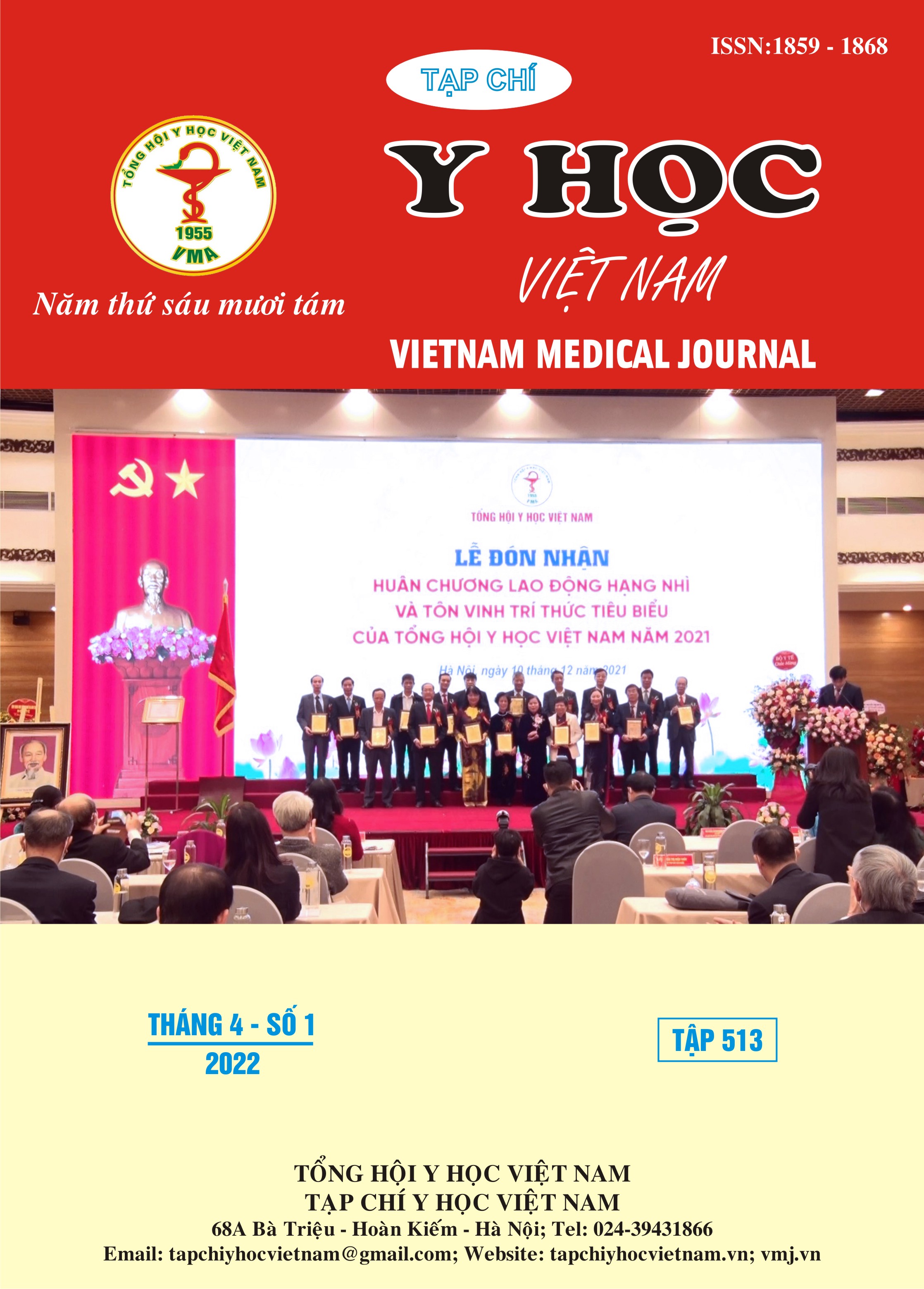DETERMINATION OF CONCENTRATION, RELATIONSHIP, CORRORATION BETWEEN PLASMA NT-pro BNP CONCENTRATION WITH LEVEL, MORPHOLOGY AND FUNCTION OF LEFT VENTRICUALR IN HEART FAILURE PATIENTS AT VINH CITY UNIVERSITY HOSPITAL
Main Article Content
Abstract
Aim: To determine the relationship and correlation between plasma NT-proBNP concetration with the degree and stage of heart failure and left ventricular morphology and function. Subjects and methods: 109 patients were diagnosed the heart failure according to ESC 2016 criteria with the average age of 76.17 ± 12.18. Clinical examination, echocardiography and NT-proBNP test were performed to assess the correlation between plasma NT-proBNP levels and the degree and stage of heart failure and left ventricular morphology and function. Resulls: The mean NT-proBNP concentration in heart failure patients was 6839.06 ± 644.51pg/ml. The concentration of NT-proBNP is related to the degree of heart failure according to the classification of NYHA, ACC/AHA with the difference between levels of heart failure with statistical significance p<0.001. The concentration of NT-proBNP and the left ventricular morphological indices (LVDd, LVM, LVMI) were positively correlated with the correlation coefficient r = 0.772, r = 0.793, r = 0.722; p<0.001, respectively. NT-proBNP concentration and left ventricular ejection fraction were negatively correlated with the correlation ratio r = -0.748, p < 0.001. Conclusion: NT-proBNP concentration is related to NYHA, ACC/AHA classification of heart failure, there is a positive correlation between NT-proBNP concentration and left ventricular morphology and negative correlation with left ventricular function.
Article Details
References
2. GBD 2015 disease and injury incidence and prevalence collaborators (8 october 2016), "Global, regional, and nation incidence, prevalence, and years lived with disability for 310 diseases and injuries, 1990-2015: a systematic analysis for the Global Burden of Disease Study 2015”, Lancet, 388 (10053), 1545-1602. Doi: 10.1016/S0140-6736(16) 31678-6.
3. Phạm Thắng, Tạ Mạnh Cường, Phan Thanh Nhung (2010), “Nghiên cứu nồng độ B-type Natriuretic Peptide huyết tương của bệnh nhân suy tim mạn tính”. Y học Việt Nam, số 1 tháng 4 năm 2010; pp. 51-56.
4. Phạm Thắng, Tạ Mạnh Cường, Phan Thanh Nhung (2010), “Nghiên cứu nồng độ B-type Natriuretic Peptide huyết tương của bệnh nhân suy tim mạn tính”. Y học Việt Nam, số 1 tháng 4 năm 2010; pp. 51-56.
5. Mahmood, Levy, Vasan, Wang (2013), “The Framingham Heart Study and the epidemiology of cardiovascular disease: a historical perspective”, Lancet, 383(9921), 999-1008.
6. Hoàng Anh Tiến, Huỳnh Văn Minh, Lê Thị Phương Anh, Phạm Như Thế (2006), “Đánh giá sự biến đổi NT-proBNP ở đợt cấp bệnh nhân suy tim mạn”, Tạp chí tim mạch Việt Nam, số 43, tháng 3 năm 2006.
7. Phạm Vũ Thu Hà (2012), “ Nghiên cứu sự biến đổi nồng độ NT-proBNP huyết tương ở bệnh tim thiếu máu cục bộ mạn tính”
8. Châu Trần Phương Tuyến, Đinh Minh Tân (2010), “Khảo sát hình thái và chức năng tâm trương thất trái bằng siêu âm tim ở bệnh nhân có tuổi đái tháo đường type 2”
9. Angela Yee- Moon Wang, Christopher Wai- Kei Lam, et al (2007), “N-Terminal Pro-Brain Natriuretic Peptide: An Independent Risk Predictor of Cardiovascular Congestion, Mortality, and Adverse Cardiovascular Outcomes in Chronic Peritoneal Dialysis Patients”, JASN 2007; 18 pp 321-330.


